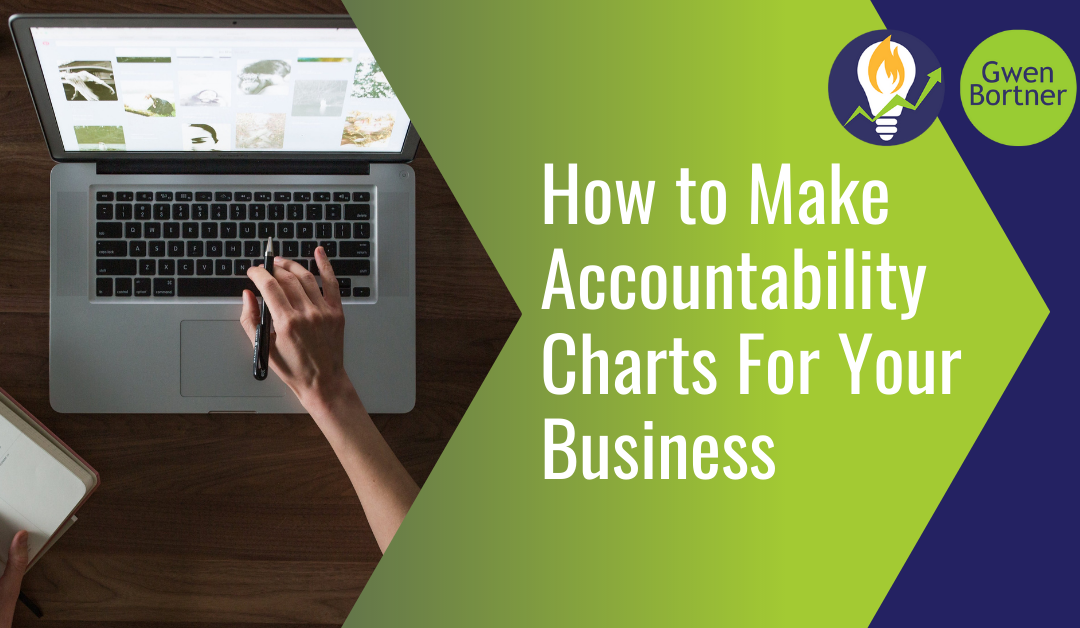
by Gwen Bortner | Leadership, Operations
For my entire life as an entrepreneur, one thing that I really geek out over is quarterly review & planning sessions. I just love the clarity I find in these sessions that helps me take an honest look at where I’ve been, the momentum it builds to set goals for my future, and the security of knowing I have a solid plan to carry me forward for the next three months.
Since this has been one of my favorite topics for years, I’ve written quite a lot of information about it! So today I’m rounding up some of my favorite posts, in the hopes that they might inspire you to find some motivation around your own quarterly planning.
Want some advice and tips for quarterly planning? Check out these posts…
If you want to DIY a quarterly planning process for yourself, these resources should be pretty useful to you in that process. However, if you’re looking for something a little more useful, I’d love to invite you to join me for the Quarterly Tune Up.
The Quarterly Tune Up is my goal-setting program for successful CEOs and entrepreneurs who want to…
- get clear on where they’ve been and face the facts of their current business situation.
- use a customizable system to set goals that are authentic to their own needs and dreams.
- have the support and inspiration that comes from brainstorming with like-minded entrepreneurs and surround themselves with others who totally “get it.”
- hold themselves accountable with as much or as little pressure as they need from an outside source in order to take the action required to achieve their goals.
- carve out time each quarter to work on their business goals and take the regular action required to get to the next level.
Interested in how Quarterly Planning can help you achieve the goals you have for your business? Join us April 6th & 7th, 2022, for the Quarterly Tune-Up!

by Gwen Bortner | Leadership, Operations
Do you ever finish out your work day and wonder where the time went? Do you feel like you’re not really accomplishing very much, even though you’re working all day? Chances are you’re losing crucial time in your business trying to do too many different tasks, or manage too many different people. A solution for this problem is to create an accountability chart for your business.
An accountability chart is like an organizational chart, but with one key difference: an accountability chart focuses on what people are going to be accountable for rather than just listing their job description. I would love to take credit for this idea, but the first time I was exposed to it was in the book Traction by Gino Wickman.
Creating an accountability chart will help you get clarity on who’s doing what, but also help you step back and take accountability only for the tasks you’re supposed to be handling as the CEO. For everything else, your only job is to hold your people accountable for what they owe you.
How to Create an Accountability Chart in Your Business
Step 1: List the tasks that must be completed in order to run your business.
You can group these into different areas, but don’t let yourself get boxed into existing job descriptions or the people who are currently working for you. Think only about the actual tasks that need to go on somebody’s To Do list in order for your business to keep running every day. List them all.
Step 2: Group those tasks into roles.
Think about the most logical way to combine those tasks into roles, or job descriptions. No matter how you’ve done it in the past, this is a chance to invent the best practices that will carry your business forward. If someone is doing Task A, which other tasks are the most logical for them to take on as part of their role in your company?
Step 3: Define the accountability for each role.
What is the deliverable outcome for each job description? What will that person need to be accountable for producing as they complete those tasks? You may also want to use this step to put a time frame on this accountability: how frequently do these tasks need to be completed for maximum results? Is there any flexibility on this, depending on the person you eventually hire to fill this role?
Step 4: Determine the number of hours or people needed to fill this role.
It’s only natural that the roles you have in your business will grow as your business does, but think about right now: how many hours per day or week would it take someone to fulfill the duties of each role? Chances are, when you’re just starting out, one person (maybe even you) can take on several roles at once. It’s still important to define them as separate roles, though, so that as the business grows that person can pass off some roles to other people and fill more of their time doing fewer jobs.
Step 5: What is the appropriate accountability structure?
This is where the accountability chart starts to look more like an organizational chart. A Chief Financial Officer role may also be accountable for ensuring the roles of Bookkeeping and Payroll Tax Preparation are being fulfilled. And right now, those roles all may be the same person. However, as your business grows, those roles may be taken over by other people. Keep in mind, we are designing for the future, not just the present.
Step 6: Share as needed.
Everyone who works for you doesn’t need a detailed job description for every other person in the business, but they do need at least a baseline of information. If I’m your employee, I need to know my own job in pretty strong detail so that I make sure to complete my tasks and maintain the things I’m accountable for. I also need to know who I report to with questions, problems, and results. For everyone else in the business, I just need to have a basic idea of their role so that if an item comes across my desk that should really be theirs, I know where to forward it.
As you develop your chart, remember that accountability is key. You don’t want “too many cooks in the kitchen,” or too many folks who are accountable for the same thing. The higher up you go on your chart, the fewer people should be accountable for each outcome. Fundamentally each role should be able to be summarized by 3 – 5 bullet points.
It may seem unnecessary if you’re still at the stage of business where you’re doing most of the work, or you only have 1 or 2 employees or contractors. However, having clear roles now means it’s easier to grow your business down the road, because you can hire people according to their strengths. If one person is balancing multiple roles right now, they can eventually give away the ones that aren’t firmly in their wheelhouse in order to focus on the ones that are.
If you need some help identifying the roles in your business and holding your team accountable for their tasks, come join us in the Operations Engine. You’ll get support from other CEOs like yourself, with guidance and advice from me every step of the way. Click here to schedule a call for more information.
(PS: if you’d like to dig deeper into this topic, I really recommend the book Traction: Get a Grip on Your Business, by Gino Wickman. It has some really practical advice for how to get a handle on your business operations.)

by Gwen Bortner | Operations
How many assumptions do you make about your business on a regular basis? Do any of these sound familiar to you?
- I’m pretty sure I’m on track to meet my goals this quarter.
- It feels like my numbers are about the same as they were last year.
- I haven’t gotten any red alert notices from my bank, so I assume my financials are fine.
- It seems like my clients are happy with the work I’m doing.
- I’m pretty sure my employees are doing the work I’ve asked them to do.
Running your business on assumptions is a dangerous game. If you’re assuming everything is okay, you’re letting yourself off the hook. You need to stop assuming and start knowing.
So, what’s it going to take for you to know that your business is on track to meet your goals, rather than just continuing to assume you’re going to make it?
Ask yourself the following questions:
What do I need to track?
Consider the most important metrics in your business: financials, sales, new clients, referrals, or whatever it is that usually brings you the most growth. Remember these metrics don’t have to be “typical” measures, they just need to be drivers of your goals. Those are the metrics you need to be tracking regularly.
What are my goals for each of those metrics?
Once you know what to track, set a goal for each one. Pick a goal that you can meet within the next quarter, so that it will be easier to track and you’ll see results in a shorter amount of time.
How often do I need to track these things?
You want to track each area often enough that you can see progress when it happens or catch problems when they occur. However, the balance to that is that you don’t want to track so often that it seems like you’re not making any progress at all, because that can be disappointing. (Think of it like weight loss: if you measure your weight every day it can be difficult to see progress, so once a week is a more reasonable time frame.) So this might be daily, weekly or monthly.
How will I hold myself accountable?
You need to hold yourself accountable for actually tracking the metrics, but also for reaching your goals. It doesn’t need to be fancy, it just needs to be used consistently and deliver the information you need. Celebrate the wins and if you notice a backslide in any particular area, make sure that you take the time to work on that area and don’t just let it continue to falter.
How will I hold others accountable?
Some of the areas you’ll want to track may fall under the responsibility of other people who work for your business. If one of your employees isn’t meeting their goals, it’s your job to hold them accountable for that and also to support them in making corrections. If it comes to it, it may also become your job to let them go if they’re consistently not meeting your expectations.
You are the CEO of this business; if you don’t hold yourself accountable for meeting your goals, how can you expect the other people who work for you to do the same? So you probably need to have a few metrics to track too. Stop guessing, start knowing, and don’t hold back on keeping everyone accountable for meeting the goals you’ve set for your business.
If you need a little help in this area, accountability is my specialty! I work with CEOs to hold them accountable for doing the work that’s going to bring them the results they’re after. I won’t sugar-coat things, but I will give you options, advice, and support when you need it. If that sounds like something you need, click here to schedule a call and learn more about the Operations Engine, my group coaching program for CEOs who are ready to be accountable for their goals.

by Gwen Bortner | Leadership
How long have you been the only person working in your business? Even if you have a few other people working with you, if you’re the one doing all the heavy lifting, it may be time to re-evaluate a few things.
You can’t keep making things up as you go, changing to meet every new challenge, and adapting to every curveball if you want to have a successful business. If you’ve had a series of “make it work” moments in your business lately, it’s time to take a step back and fix that.
Get Clear on Your Role
If you’re looking to grow your business, then you need to think of yourself as the CEO, not a solopreneur, not the sole proprietor. You can’t keep handling everything by yourself, because you’ll be spending so much time working IN your business that you won’t have any time or energy left over to work ON your business.
First, identify all the tasks in your business that truly require the work and talent of a CEO: those are now your tasks; everything else can be given over to someone else. If you’ve already got contractors or employees working for you, talk to them about expanding their role in the company. If they aren’t the right folks for the job, or if you need more people to accomplish all of those tasks, it’s time to start the hiring process. Bring on as many new team members as you need to in order to give yourself the time to truly step into your role as the CEO of this company.
Get Clear on Your Vision
If your brain feels like a browser with too many tabs open, chances are you’re pursuing too many goals at once. Choose just ONE goal at a time, and put all your energy into achieving that goal. If you try to chase too many goals at once, you’ll never really get all the way to achieving any of them; narrowing your focus means that you’ll be able to accomplish a lot more in the long run.
If you feel like you don’t have the time or the headspace to sit down and get clear on your vision, go back and read that last section again, because that probably means you need to hire more help.
Communicate Your Vision
You have a team, and you have a vision: now it’s time to put those two things together. One quick caveat: everyone in your business doesn’t need to have a detailed knowledge of your entire vision. However, each person in your business probably does need to know specific parts of that vision. Start by distilling your mission and vision into one short statement, no more than a paragraph. Share that with everyone in the company, so that they can help you achieve that vision and represent it as they work in your company. Then, think about the people who might need even more information and what that would look like. Your accountant or CFO, for instance, needs more details on your financial goals. Your right-hand guy or gal probably needs a bigger or more detailed vision plan. Your social media person needs to understand how to paint the picture of your company online. Give each person the information they need, but don’t muddy the waters for them by giving them too much.
The last step in communicating your vision is just to make sure that everyone on your team knows specifically what their role is in helping you carry out your goals. What jobs do they need to do, what’s their area of expertise, what are their tasks, and when do they defer to someone else? Communicating these roles clearly will help your team run like a well-oiled machine.
Hold Everyone Accountable
If you have clearly communicated the roles and tasks for everyone in your company, the next step is to regularly check in on their progress. Schedule time for an annual review (or more frequent, if you think that would help) for every employee. Check in on their performance, give and receive feedback on how things are going for them, and set goals for the next year. As needed, during these reviews you may discover that it’s time to let someone go, or to hire some new people to help balance out the workload or take on new tasks.
Remember, as the CEO you’ve got to hold yourself even more accountable than everyone else. The buck stops with you, and that means you also need to check in with yourself. Evaluate your own performance, make sure you’re doing everything you need to be doing (and not avoiding the tasks you find uncomfortable or unpleasant), and drive the ship that is your business. If you don’t hold yourself accountable, you can’t expect your team to follow you.
If you feel like you could use some help in this process, I’d love for you to join the Operations Engine. It’s full of business owners who are working on transitioning to the role of CEO, and it includes guidance and help along the way from me and from the other members of the group. Growth can be challenging, but you don’t have to do it all by yourself: click here to schedule a call and learn more.

by Gwen Bortner | Operations
In case no one has told you recently: it’s okay to take some time to stop focusing on growing your business all the time, and just focus on maintaining what you’ve built. If you believe a lot of the “experts,” growth should be your only business goal; if you’re not growing, they’d have you believe you’re failing. The truth is, however, that 100% growth 100% of the time just isn’t sustainable – and if your business isn’t sustainable, that’s the real problem.
You may find yourself reaching the point where you’re very comfortable with your business where it is right in that moment, and you’re ready to just keep that level going. Other times, you may need to take a season or two to just hold your business where it is, because the things going on in your life outside of work need more of your attention. In any case, sustainability is a perfectly acceptable business plan. Being in a constant state of stress about your business is the thing that’s really not sustainable; if that’s where you are, it might be time to take a step back and focus on maintenance.
Questions to ask yourself when you’re evaluating the sustainability of your business:
1. Does my income meet all of my financial needs? Whether you want your business to supplement a household income or pay every bill, is it able to do that every month with consistency?
2. Am I happy with my income? Do you feel good about what you make, and do you feel it’s worth the amount of time and effort you’re putting into your business in order to earn that income?
3. Am I able to maintain my desired lifestyle? Remember, YOU get to decide what success looks like in your business, so now it’s time to decide: do you feel successful with the income you’re earning?
4. Am I working a schedule I’m comfortable maintaining in the long term? Does your business schedule suit your lifestyle? Are you working a reasonable amount of hours, or working yourself to death? Can you keep up with your current pace over the next several years?
5. Am I happy with the people I work with? This includes your clients or customers, employees, contractors, colleagues, and mentors. Are you surrounded by people who light your enthusiasm from within? Do you enjoy the people you communicate with in order to run your business?
6. Am I confident and content with the actual work I do? Think about the daily tasks you have to complete in your business as well as the services you offer your clients. Do you actually enjoy doing those things, day in and day out? Would you be happy doing them for the next five or ten years?
7. If I lost a client or customer, could I replace that income? The thing about sustainability is that it does require some growth; however, instead of growing bigger each year, you’re just growing to replace anything that changes or is lost. If you are able to replace clients when you lose them, then you have a sustainable business.
Once you can say “YES” to the questions above, then you’ve got a sustainable business. It’s time to just keep doing the work you’ve been doing, growing to replace or replenish rather than to increase and expand. Make sure to check in regularly with your measurable outcomes so that you know you actually are sustaining your current level of business, and you’re good to keep going for the next season or all the seasons to come, whatever you choose to do.
If you’re not quite able to confidently answer those questions, I’d love to help! Click here to schedule a call and see if for the Operations Engine, a group coaching program where we will work on fixing any misaligned GEARS in your small business. We’ll figure out where you need to make any necessary changes in order to get your business to full sustainability, and also identify the areas that are already working exactly how they should be.






